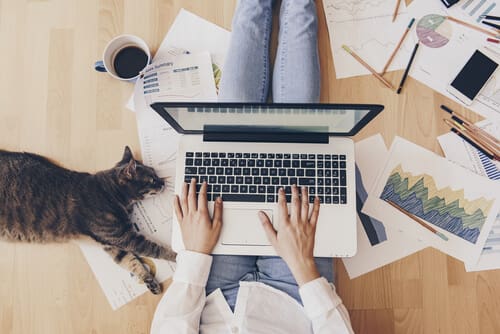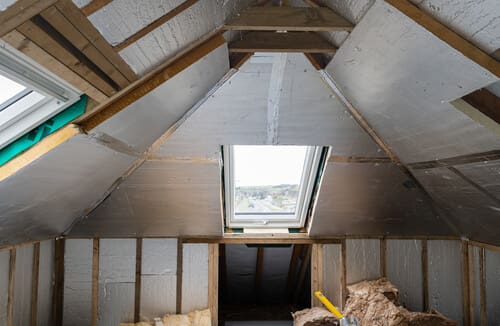Love it or loathe it, the ability to work from home has become one of the most profound social changes of our lifetimes, writes Sue Williams in Domain.
For some, it means the freedom to sleep in late, put the washing on during breaks between tasks and play with the dog while pretending to be absorbed in a Zoom meeting discussion. For some, it’s the capacity to skip the commute and work solidly without as many interruptions.
And for others, WFH entails loneliness, boredom, a lack of motivation and the absence of corporate culture, mentorships, career growth and job satisfaction.
But for everyone, it’s involved spending a lot more time at home and noticing what perhaps it may lack, in terms of private spaces to work, outdoor areas for a breath of fresh air and an overall environment that’s conducive to creativity and calm.
As a result of the WFH shift, many people have embarked on a frenzy of home renovations; projects that often include adding a home office or installing workplaces around the loungeroom or in bedrooms.
Tim Reardon, chief economist with the Housing Industry Association, believes our spending this year will be up more than 10 per cent even on 2020’s $38.6 billion cash splash. “It’s a lot to do with COVID and people seeking more living spaces and working from home,” he says.
National director residential of property valuers Opteon Solutions, Scott Odell, agrees the WFH era has made us more demanding of our homes. He says, “It’s resulted in an increased appetite for certain property attributes that were traditionally considered value-adds for people looking for their new dream property.
“We have observed record prices being achieved in many suburbs across the country, and there are some themes emerging in the aspects of the property that are drawing the most interest for new buyers, like home offices and studies.”
Buyers’ agent Michelle May says it’s turned parts of the real estate industry on its head. Many vendors are now putting the fact that a property for sale has a study or home office very close to the top of ads, rather than way down near the bottom, knowing they’re in so much demand.
“These days, if a house or apartment doesn’t have a nook or cranny that can be multi-functional so someone can work there, that can be the deal-breaker,” she says. “As a result, you’re now seeing people talk about their shed as a potential home office, even though it’s strictly speaking not classed as habitable so it can be false advertising.
“But three-bedroom homes are even more in demand as people really want a study where they can close the door on the rest of the house. Others are getting really creative.
“We’ve seen areas under the stairs now fitted with desks and shelving, pantries being converted, and attic spaces becoming offices instead of storage. There’s 100 per cent more interest in these kinds of spaces since COVID.”
That happy feeling while working from home is essential for mental wellbeing, and it helps if you have a beautiful space to do it from, advises Coco Republic head of interior design Diana Ribarevski.
It might be a room of its own, or a part of another space, but it’s always critical that it’s both stylish and functional, she says. “It needs to work with the greater aesthetic of your home so it’s a much nicer spot to work from, and people are now paying more to set it up and make it look good than they used to.
“They’re looking for a much more substantial – and lovelier – set-up now as they’re spending longer working at home, and are often installing multiple workstations for others in the family, too.
“They’re spending on customised joinery and equipment that works well together. We’re producing, for instance, a lot more stylish and practical ranges of desks and chairs and lamps and accessories than we ever used to.”
For although WFH may be problematic for some, greater flexibility with our working arrangements can only ever be desirable, and the right mix can be perfection.
“One good thing that has come out of COVID is the realisation that we no longer need to be tied to an office to make a living,” says Robert Wilkinson, CXO of office technology start-up OfficeMaps.
“Whilst many enjoy the luxury of working from home and not having to deal with the office commute every day, just as many people miss human interaction and face-to-face contact.
“So enter now the hybrid working arrangement, with flexible work, working from home, part-time offices and shared office spaces, where we’re all working towards finding that ultimate work-life balance …”
You can read the full feature with personal case studies HERE in Domain online.




